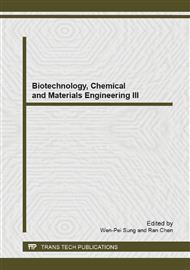p.437
p.441
p.446
p.450
p.455
p.459
p.465
p.471
p.475
Laboratory Research on Enhancing Oil Recovery of Three Bacteria D1-3
Abstract:
A group of petroleum-degrading bacteria were obtained from the sludge samples that collected from the Triassic Yanchang 6 reservoir. Of these, three strains with maximum degradation performance were tested in this study. The chromatographic analysis showed that the content of molecules with 30 or more carbons of oil was reduced by 18.36%. Core flood experiments with different flooding rate showed that the oil recovery of microbial flooding was increased by 8.76% than water flooding. The research ruled out that the three strains have well compatibility with the reservoir with remarkable result of petroleum-degrading.
Info:
Periodical:
Pages:
455-458
Citation:
Online since:
January 2014
Authors:
Keywords:
Price:
Сopyright:
© 2014 Trans Tech Publications Ltd. All Rights Reserved
Share:
Citation:


